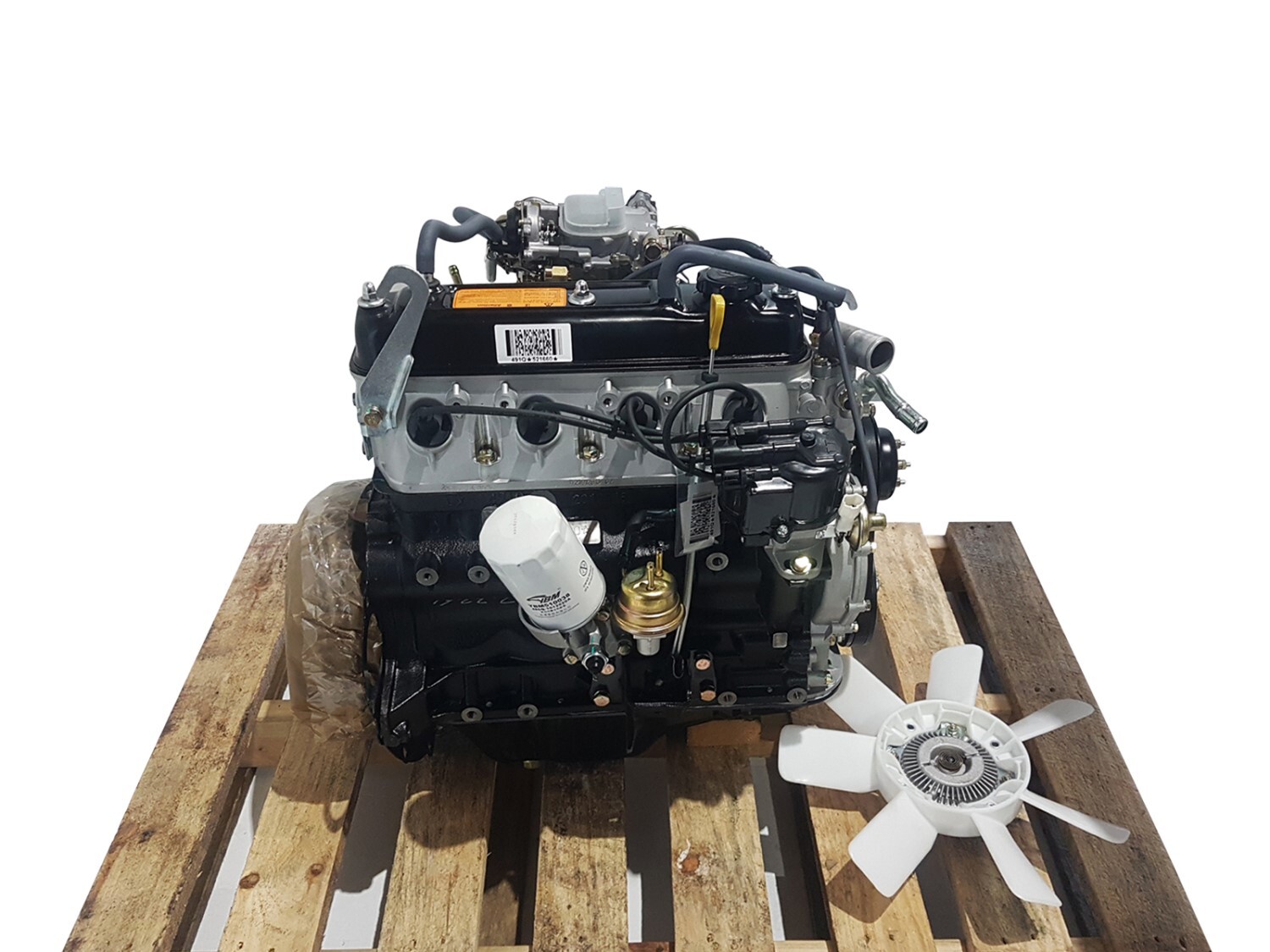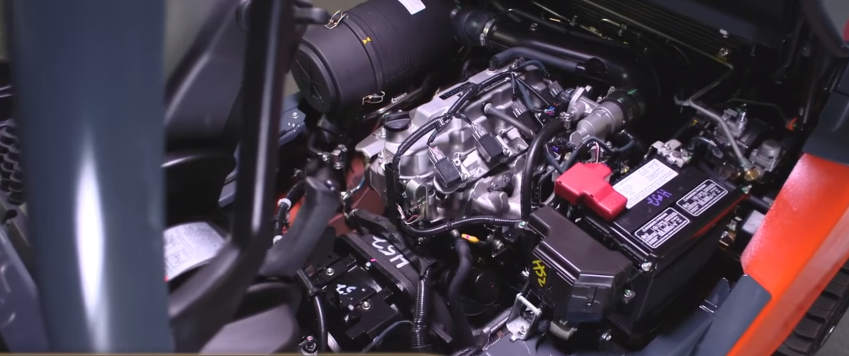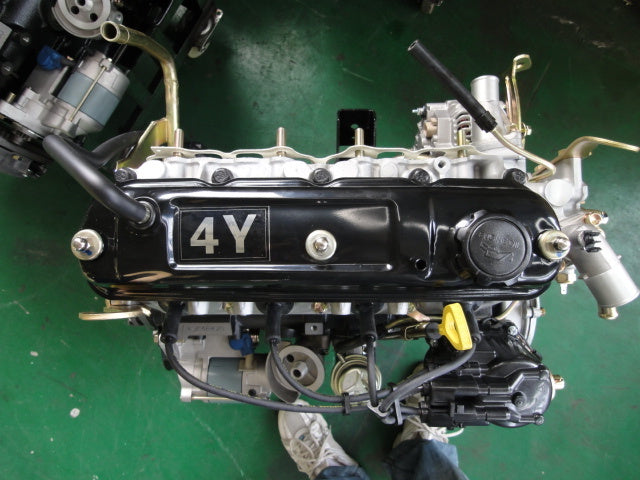Exploring the Different Types of Engine: Which One Fits Your Requirements?
Interior combustion engines continue to dominate due to their reliability, while electric engines are obtaining grip for their sustainability. Hybrid engines provide a flexible concession, and diesel engines stand out for their power in demanding applications.

Inner Burning Engines
Internal burning engines (ICEs) are the backbone of modern transport, powering a large array of automobiles from automobiles to airplanes. These engines operate the principle of transforming fuel right into mechanical energy via a series of regulated explosions within a burning chamber. The most usual kinds of ICEs consist of gas engines, diesel motor, and rotary engines, each designed to fulfill certain efficiency and effectiveness needs.
Fuel engines generally make use of spark ignition, while diesel motor rely upon compression ignition, leading to distinctive differences in gas efficiency and power outcome (4y engine). Rotating engines, or Wankel engines, offer a small layout and smooth operation, however are much less typically made use of in mainstream applications
ICEs have gone through substantial advancements in innovation, consisting of the introduction of turbocharging and fuel injection systems, which boost total efficiency and performance. Regardless of their efficiency improvements, ICEs deal with raising scrutiny because of their ecological influence, particularly concerning greenhouse gas discharges. As the auto sector evolves, the future of ICEs remains a topic of dispute, stabilizing efficiency, performance, and ecological factors to consider. Nonetheless, they remain to play a vital duty in international transport infrastructure.
Electric Engines
As concerns concerning ecological sustainability and nonrenewable fuel source reliance grow, electrical engines have actually arised as a compelling alternative to inner burning engines. These engines use electrical motors powered by batteries or gas cells, giving a cleaner and a lot more effective means of propulsion.
One of the key benefits of electrical engines is their decreased emissions. Unlike traditional engines that melt nonrenewable fuel sources, electric engines generate no tailpipe emissions, significantly decreasing air contamination and adding to enhanced public health. In addition, the effectiveness of electric motors usually exceeds that of internal burning engines, converting a better proportion of power from the source of power right into functional power for motion.
Electric engines are additionally significant for their quiet procedure, making them perfect for city environments. 4y engine. The simpleness of their design leads to fewer moving components, which can result in lowered maintenance prices and increased integrity over time
Nevertheless, obstacles stay, consisting of battery production effects, billing infrastructure, and array limitations. In spite of these difficulties, the growing investment in electrical vehicle innovation and renewable resource resources factors toward an encouraging future for electric engines, positioned to play an essential function in the change toward sustainable transport.
Crossbreed Engines
Blending the benefits of both conventional and electrical inner burning engines, hybrid engines represent a versatile option in the pursuit for reliable and lasting transportation. These engines combine a fuel or diesel motor with an electrical motor, permitting improved fuel effectiveness and minimized exhausts contrasted to standard vehicles.
Hybrid engines operate in several modes, utilizing the electric motor for low-speed driving and the internal combustion engine for higher speeds or when more power is required. This vibrant procedure not just boosts gas economic situation yet additionally adds to a smoother driving experience. Regenerative stopping is an additional essential feature, recording power typically shed throughout stopping and rerouting it to recharge the battery.

As customers significantly prioritize eco-friendliness, crossbreed engines stick out as a functional choice, offering an efficient balance of efficiency, effectiveness, and ecological obligation. This adaptability makes them ideal for metropolitan commuting and long-distance traveling alike.
Diesel Engines
Performance and power are trademarks of diesel motor, which have long been preferred for their toughness and fuel economic climate. These engines operate on the concept of compression ignition, where air is compressed to a high temperature level before gas is injected, sparking it without the need for ignition system. This process makes it possible for diesel engines to attain higher thermal performance contrasted to gasoline engines, translating right into better gas mileage and reduced carbon dioxide exhausts.
Diesel motor are especially appropriate for heavy-duty applications such as vehicles, buses, and industrial equipment, where torque and sturdiness are paramount. Their design normally consists of more powerful components to endure the greater stress created throughout procedure, resulting in longer life span and decreased maintenance expenses.

Alternate Fuel Engines
While diesel engines have lengthy controlled the landscape of durable power sources, alternative gas engines are getting traction as practical options for a more lasting future. These engines use a variety of fuels, such as pressed natural gas (CNG), propane, ethanol, and hydrogen, aiming to reduce greenhouse gas exhausts and reliance on nonrenewable fuel sources.
One substantial advantage of alternative gas engines is their prospective to lower carbon impacts. For circumstances, CNG engines release fewer toxins compared to traditional diesel motor, making them appropriate for urban transportation systems and fleets seeking to improve air quality. Ethanol, acquired from biomass, not only minimizes emissions yet also sustains agricultural economic climates.
Hydrogen fuel cells stand for an advanced growth in this realm, supplying zero-emission power with a chain reaction between hydrogen and oxygen. Challenges such as infrastructure growth and production expenses continue to be challenges to extensive adoption.
Final Thought
To conclude, selecting the suitable Website engine kind demands mindful consideration of particular requirements and choices. Inner burning engines offer reliability, while electric engines prioritize sustainability and decreased upkeep. Crossbreed engines incorporate the benefits of both, boosting performance, whereas diesel motor provide exceptional power and torque for durable applications. Alternate fuel engines present green alternatives, albeit with possible framework obstacles. Inevitably, a comprehensive assessment of driving habits and ecological worths will certainly promote an educated choice relating to engine choice.
Hybrid engines provide a versatile concession, and diesel engines stand out for their power in demanding applications. The most common kinds of ICEs consist of gas engines, diesel engines, and rotary engines, each made to fulfill certain performance and performance demands.
Unlike conventional engines that burn fossil gas, electric engines produce absolutely no tailpipe discharges, considerably lowering air contamination and contributing to boosted public health and wellness.Hybrid engines run in several settings, using the electric motor for low-speed driving and the interior combustion engine for greater speeds or when even more power is needed. Hybrid engines integrate the advantages of both, improving efficiency, whereas diesel engines give exceptional power and torque for sturdy applications.